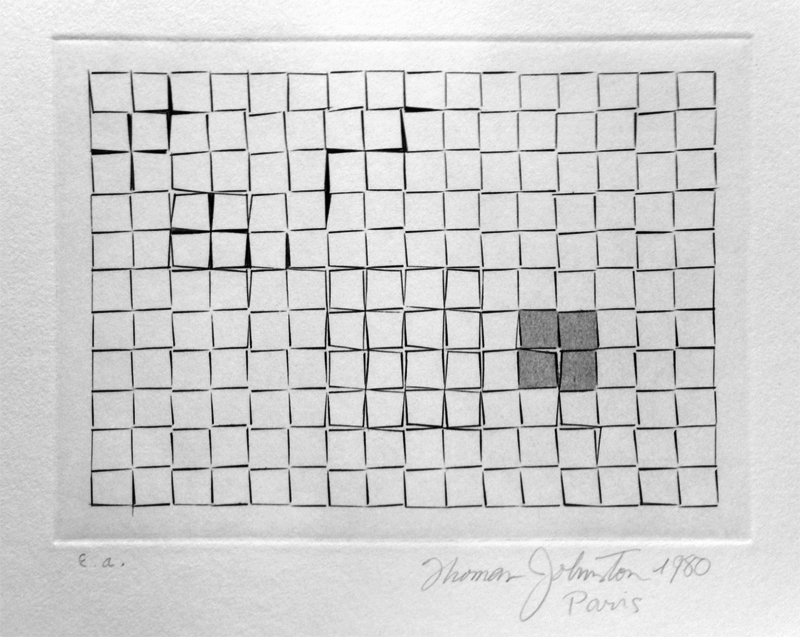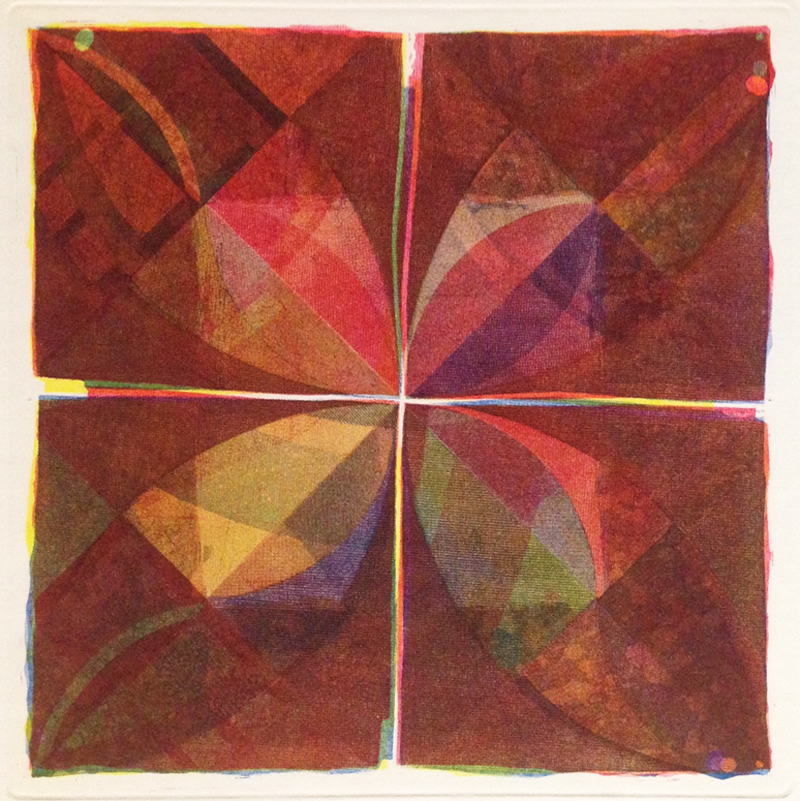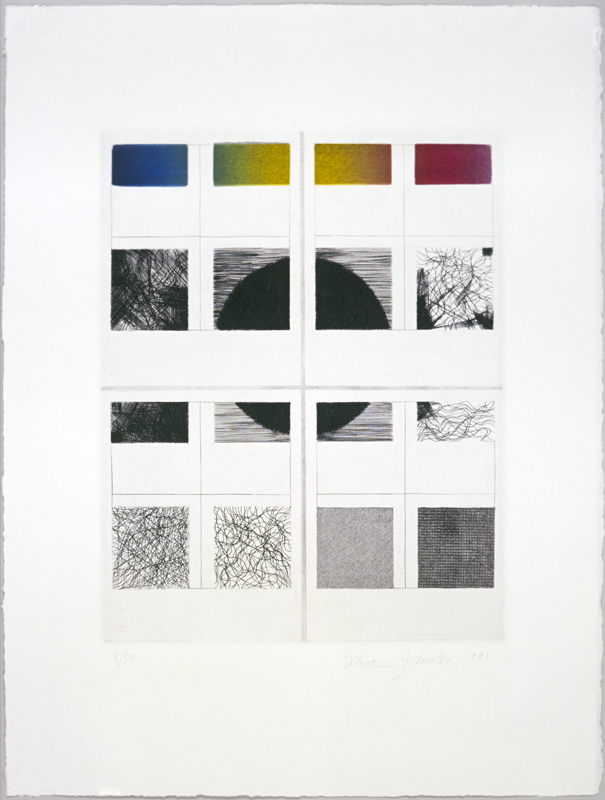Bartok and Fleuropa
Some days I would use my Carte Orange pass, taking the bus to Montparnasse, then catching the Metro to Pernety Station; other days I would walk to the atelier, exploring different routes and streets through the 14th arrondissement. I was working during the morning studio sessions, often arriving before the atelier opened. I’d go next door to Madame Paulette’s cafe, where I’d sometimes meet other artists who had come from distant parts of the world, some who had fled their countries for political reasons, others who had come to study with Hayter, and some who just needed a place to work.
Bartok is a small copperplate engraving based on a grid. Each line was cut into the copper after first experimenting with how far the burin could cut as the depth increased, thus the length of each mark was determined by this physical limitation, of the force necessary to incise the mark. The character of each mark was also the result of the burin entering the copper at a point, gaining width, depth, and weight as it moved toward its destination, deeper into the copper and in relief when printed. The grid design, while static overall, was activated by incising more lines in close proximity to some, creating movement through the grid. As a counterpoint to the linear design, I etched a silk texture into a soft-ground, creating a delicate tone in a small section.
One day I was at the press and we heard Bill call out, what is this, who’s is this? I looked over and was surprised to see that he was at my work area, and he was looking at a proof of the engraving I was working on. I thought we were about to have a good argument since this grid-based engraving was the antithesis of his soaring, curvilinear engraved works. As I approached and was about to claim authorship, he stated that this was a beautiful piece, and wanted to know who was creating it. Once he knew it was mine and we began talking about it, among other things, he likened it to some of his favorite Bartok compositions. Thus the title was delivered, and our professional relationship evolved to include friendship.
I was also working on another copperplate, using the soft-ground etching process. This work, Fleuropa, was also based on the grid, a square divided into four, then corner to corner, using many different fabrics to etch unique textures into the copper. The plate was used for printing the primary colors, rotated 90 degrees from the previous color, resulting in numerous layers, shapes, and colors. The soft-ground process worked well to exploit transparency of the different textures and enhance the mixing of color.
A third image, Roids, is a copperplate engraving I had begun in Paris but carried with me on travels in Israel and Italy. The engraving is also based on the grid system but this time referencing the idea of a photo of a photo of a photo. Before leaving Paris I had established the composition and etched some soft-ground textures into areas of the image. Thus, during my travels, I turned my burin into my recording device in lieu of a camera, cutting abstract lines and marks into grid compartments. The color was rolled on the surface through a stencil once the engraving had been inked. This allowed both black and color to be printed simultaneously, so the plate went through the press just one time.
Much has been published about Stanley William Hayter, Atelier 17, and artists who have worked there. It continues to this day as Atelier Contrepoint, directed by Juan Valladares and Hector Saunier. http://www.ateliercontrepoint.com/
Follow this link to see a listing of some of the artists who have worked at this atelier: http://www.ateliercontrepoint.com/a175.html
all rights reserved © 2013 Thomas Johnston





You paint better than any coffee drinker I know!
Very nicely laid out and nice to see this art work on display here.
df
I really enjoyed your gallery works.